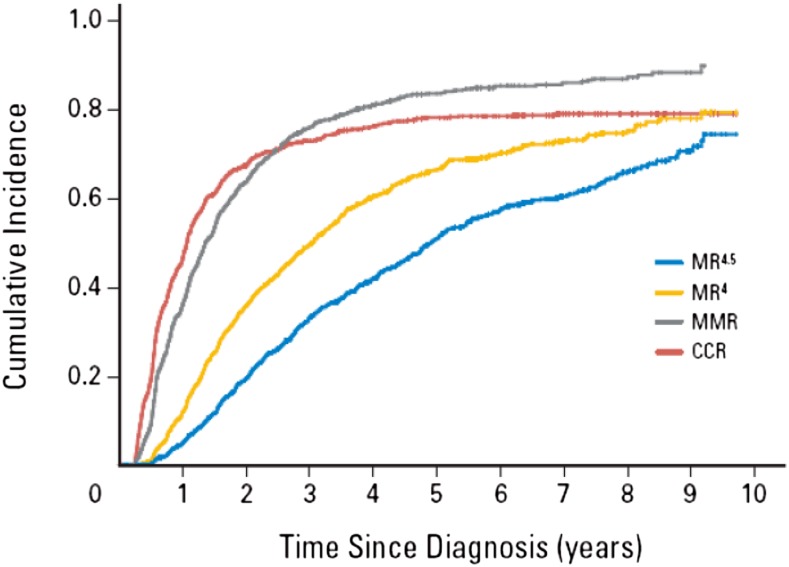Figure 4.
Deep molecular response can take many years to achieve because of the molecular response kinetics. The slow response kinetics was demonstrated in the German CML-Study IV. The graph shows the cumulative incidence of response for all patients treated in the imatinib-based study (>1300 patients). The estimated median time to reach MMR from diagnosis was rapid, at 1.4 years (∼300-fold reduction from the pre-TKI value). The estimated median time to reach the next response level MR4 (tenfold BCR-ABL1 reduction from MMR) was 3.1 years, a difference of 1.7 years. The median time to reach the next response level MR4.5 (3.2-fold BCR-ABL1 reduction from MR4) was 4.9 years, a difference of 1.8 years. This suggests the decline is not constant. The decline slows after reaching MMR and may slow again after declining to MR4. Reprinted from Hehlmann et al9 with permission. ©2014 American Society of Clinical Oncology. All rights reserved.)

